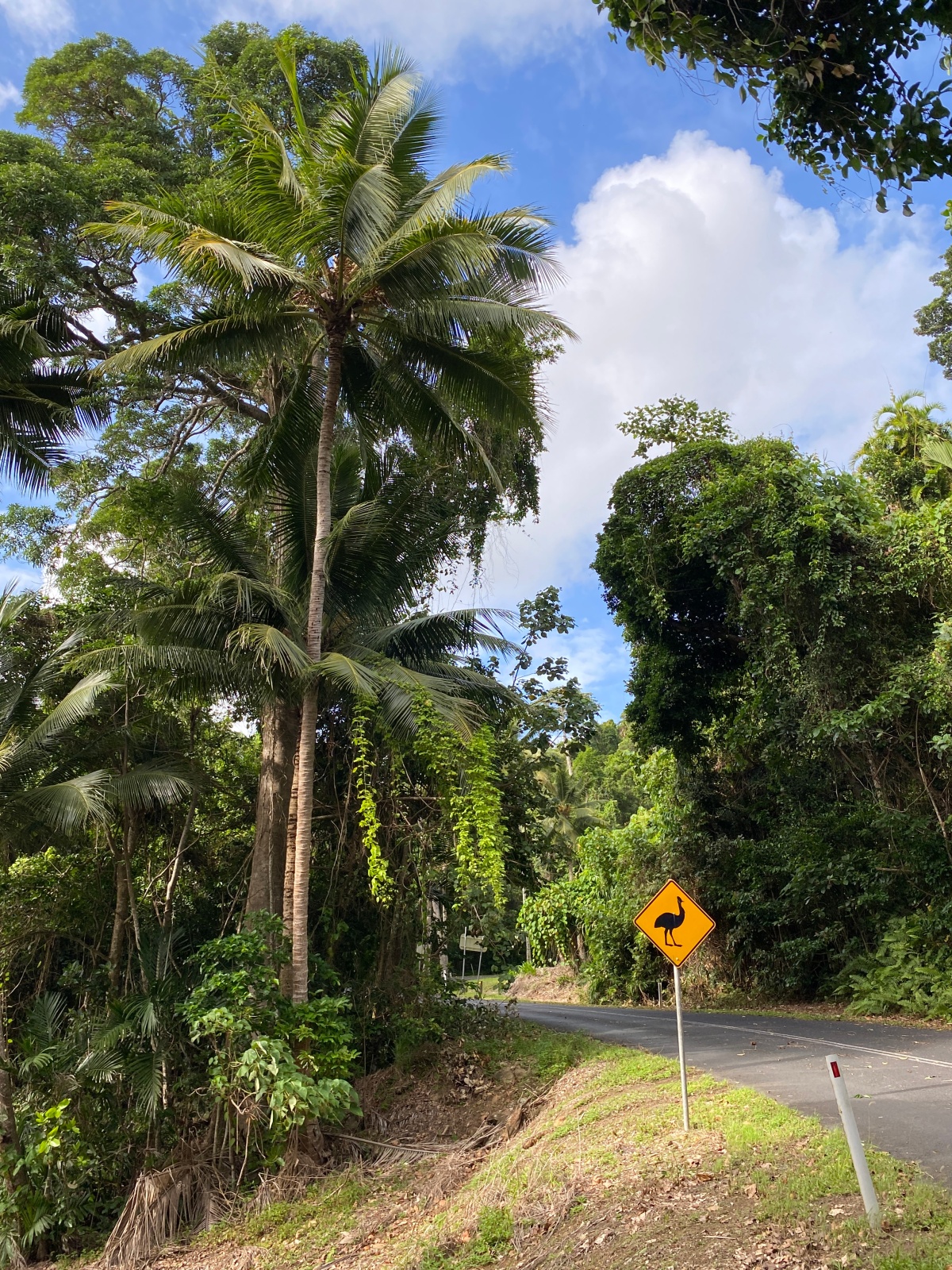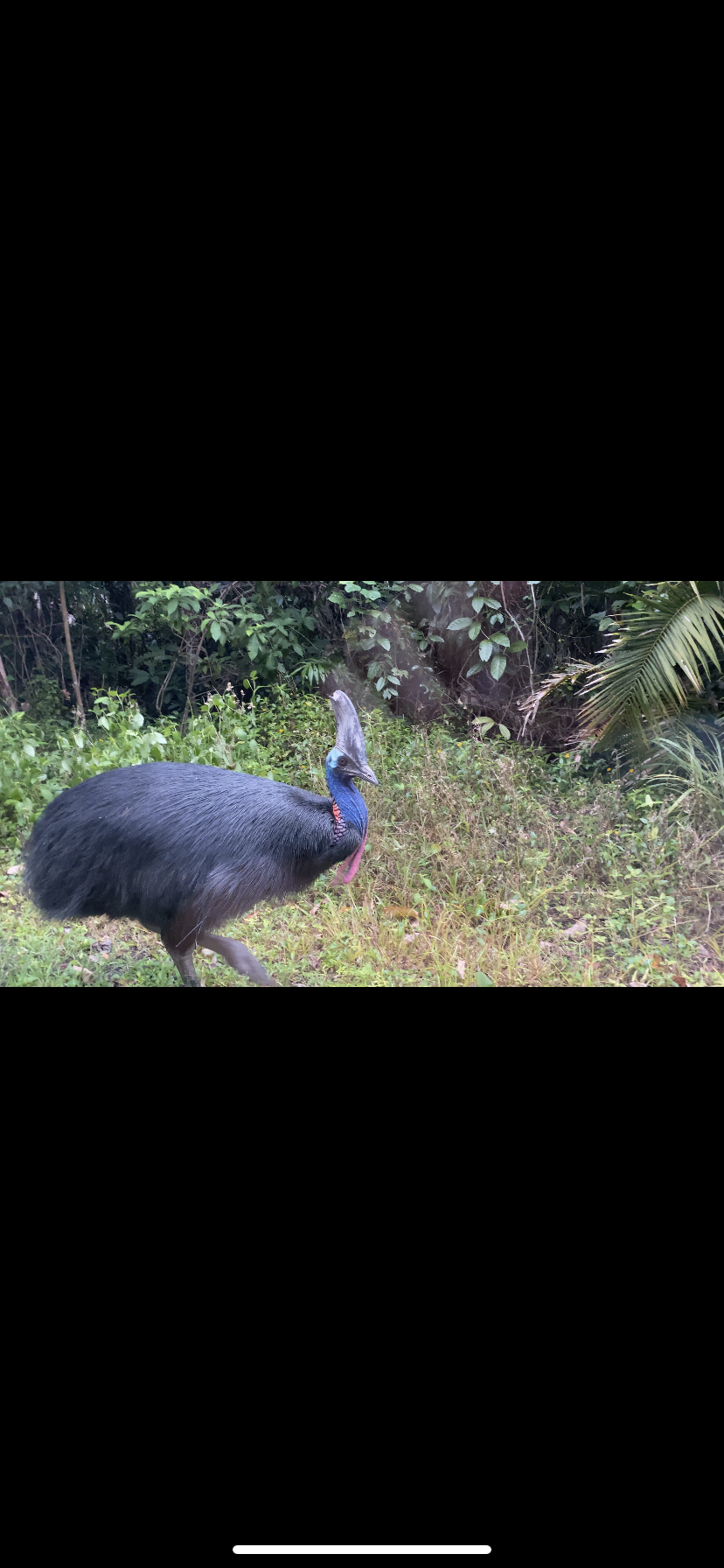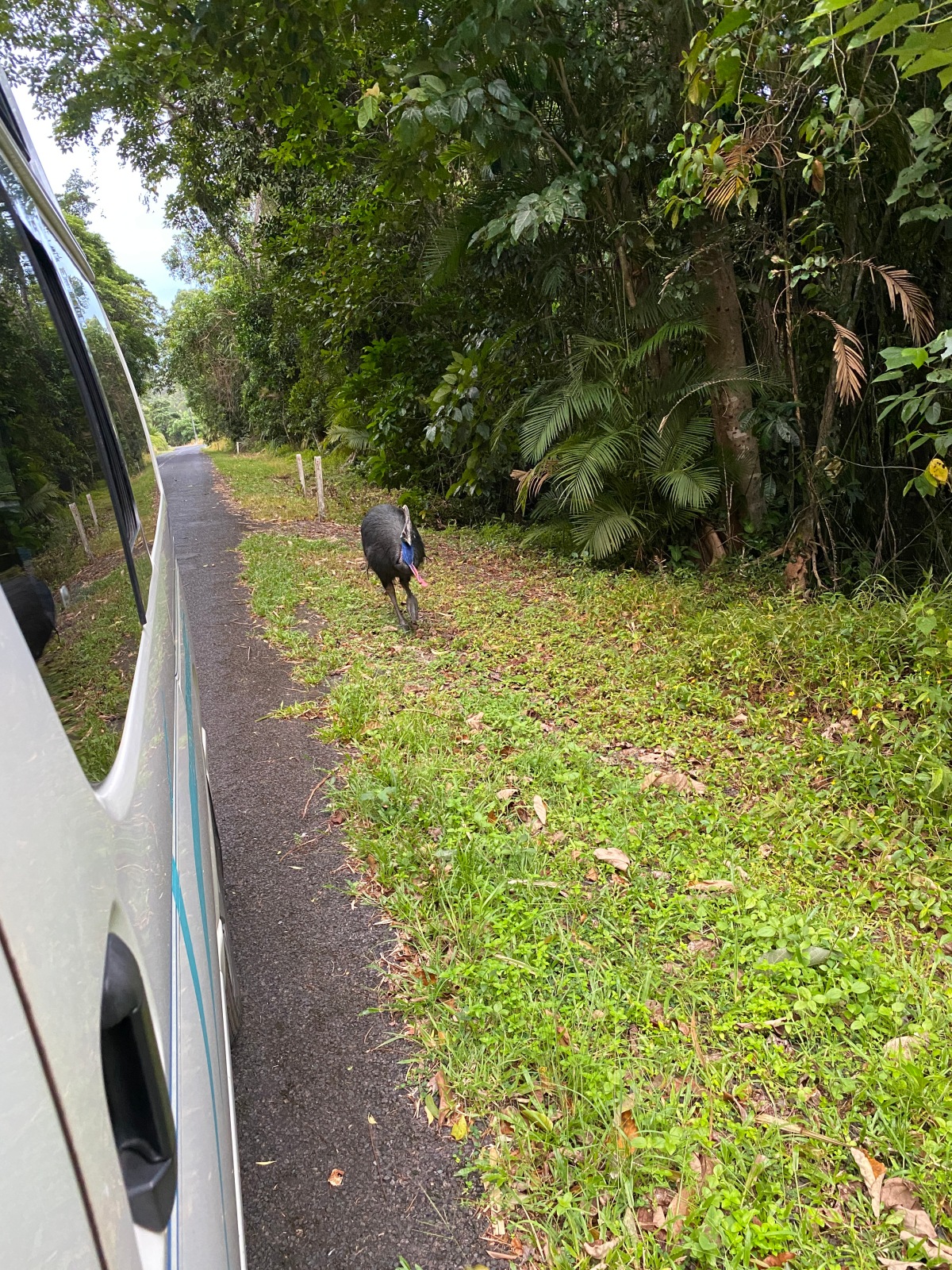The wildlife of Australia is unlike anywhere else in the world. In fact, over 80% of the flora and fauna in Australia is totally unique to the continent.
There are cute creatures you want to hug and cuddle, like kangaroos, wombats, and koalas.
There are scary animals you might run away from, like salt water crocodiles, snakes and spiders the size of plates.
Then there are creatures you just have to scratch your head at in awe, like echidnas and platypuses.
One animal that is a bit bizarre and totally allusive is the Southern Cassowary.
The southern cassowary is native to Tropical Northern Queensland, and one of three types of cassowaries remaining in the world. Cassowaries are big flightless birds, similar to emus, that began evolving 60 million years ago. While all birds have evolved from dinosaurs, cassowaries have a more direct lineage, and they certainly look like they could have been strutting around millions of years ago. .
The Southern Cassowary can grow to be 5.8 feet tall, with males weighing up to 121lbs/55kgs and females weighing up to 167lb/76kgs. They have strikingly colorful heads and necks, two long red wattles, amber eyes, and a horn like structure atop their heads known as a casque. The plumed giants nosh on fruit, bugs, and plants, but also can rip into small mammals and reptiles if they are feeling particularly famished.
Cassowaries are loners and are usually reclusive. But they can put their strong beak and razor sharp middle toe to work if they feel threatened, earning them the title “World’s Most Dangerous Bird.” “Be Cass-o-Wary” is a phrase to remember if you encounter one.
Don’t let bold titles scare you. The most recent death by a cassowary was a Floridian who’s pet cassowary attacked in 2019, but he was the first cassowary casualty since 1926. There’s a reason why wild animals shouldn’t be kept as pets… just saying. There are a handful of cassowary attacks and injuries each year, but the limited resources on the matter indicate that these attacks are usually a result of humans approaching the creatures to get a better look. Remember, cassowaries like to keep to themselves and mind their own business.
The Southern Cassowary population is dwindling due to deforestation, cyclones, and humans, and now there could be fewer than 2,000 left in Queensland (every source seemed to give a different number…)
As we heading into the Daintree Rainforest the question arose, would we be lucky enough to spot one?
Spoiler Alert: We Did!
Jeremy and I were sipping our morning coffee outside the van parked in Innisfail. A construction worker was rapidly approaching. I assumed he was going to be telling us off for some reason or another. People seem to love campervans and backpackers or hate them, and after being yelled at for cooking up dumplings in the van the night before, I was ready for the worst.
Turns out he just wanted to shoot the breeze.
Conversation led to things to do and what to see. He recommended heading down to Eddy Beach at sunrise or sunset for a chance to see cassowaries. Sold!
Nearly 24 hours later and we were cruising towards Eddy Beach.

There was a cassowary crossing sign every few kilometers, which felt like a tease as we inched along with vigilant eyes. We had been in the region for a couple weeks and even ventured into the thick of the Daintree Rainforest. Alas, no spottings.
“Southern Cassowary Over There!!!!!”
Suddenly, a cassowary popped out of the Jungle. Jeremy slammed on the breaks. The roaring of falling items accompanied our excited yelps. It was massive, majestic, and absurdly intimidating as it slowly strutted towards the van. It cozied up on the left side, poking it’s beak into the open side window. I quickly rolled up my window right before it met me eye to eye.
It nonchalantly walked in front of the van in no hurry whatsoever in a “yeah, I know I’m rare, endangered, and pretty freaking cool” sort of way. We slowly followed it as it headed down the right side of the road before retreating to the jungle once more.
The experience elicited an unbelievable travel high. Getting to observe a cassowary in the wild was a privilege.
What wildlife encounter will we have next? Stay tuned!








6 thoughts on “Brushing Elbows With a Dinosaur: A Rare Southern Cassowary Sighting”
Whoa, what a weird bird!
amazing creatures and such a cool encounter. not that many spiders are as big as plates. some are as big as tables
We saw a couple big spiders in the Daintree, but nothing close to the size of a table!
Cassowaries are so cool. I had no idea they could kill anyone.
Sent from my iPad
>
Pingback: Surviving Van Life in Queensland: What Items Are Essential? -
Pingback: The World’s Deadliest Bird and 13 Mistakes That Could Put You in Danger - Exploring Animals